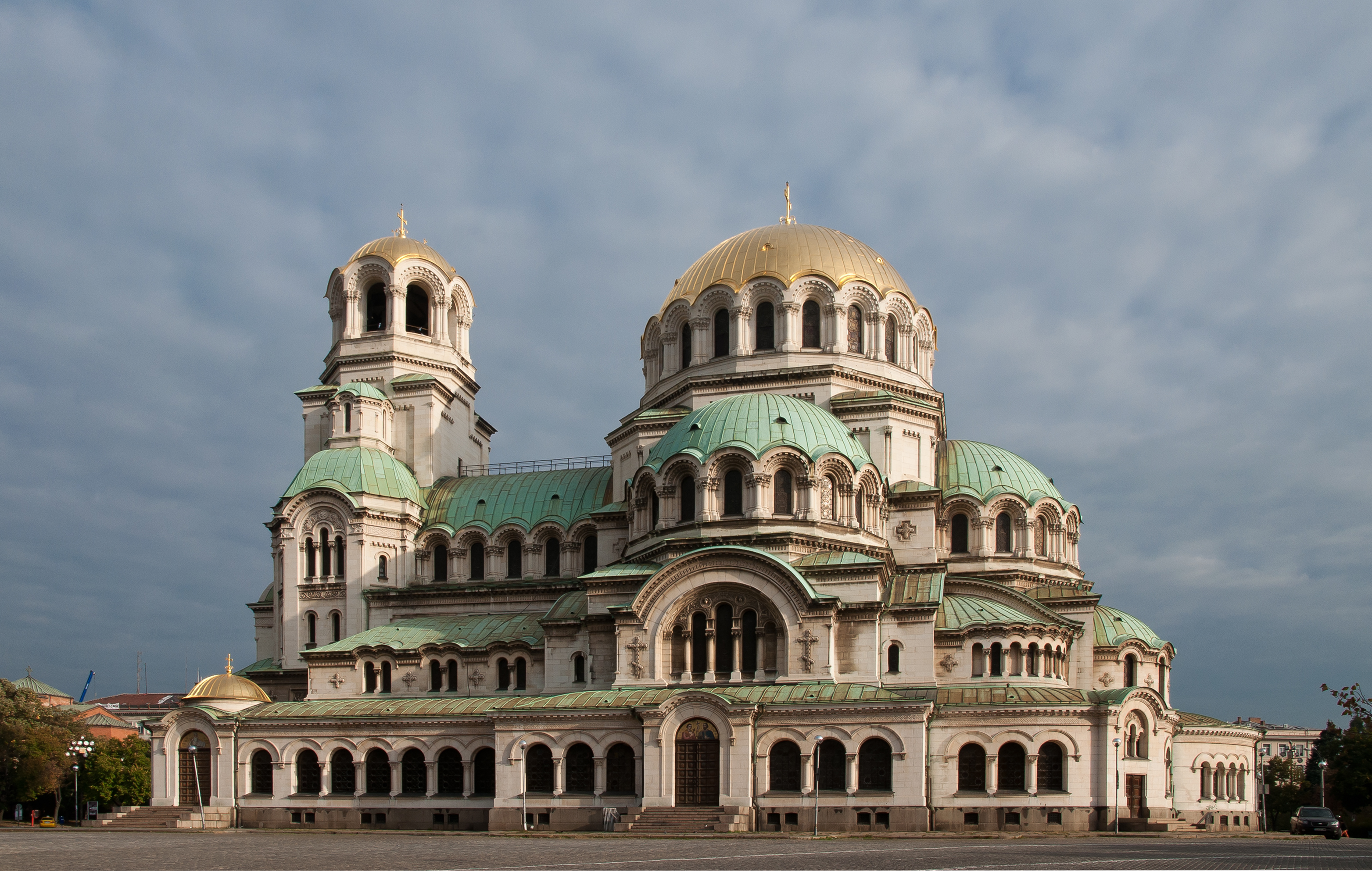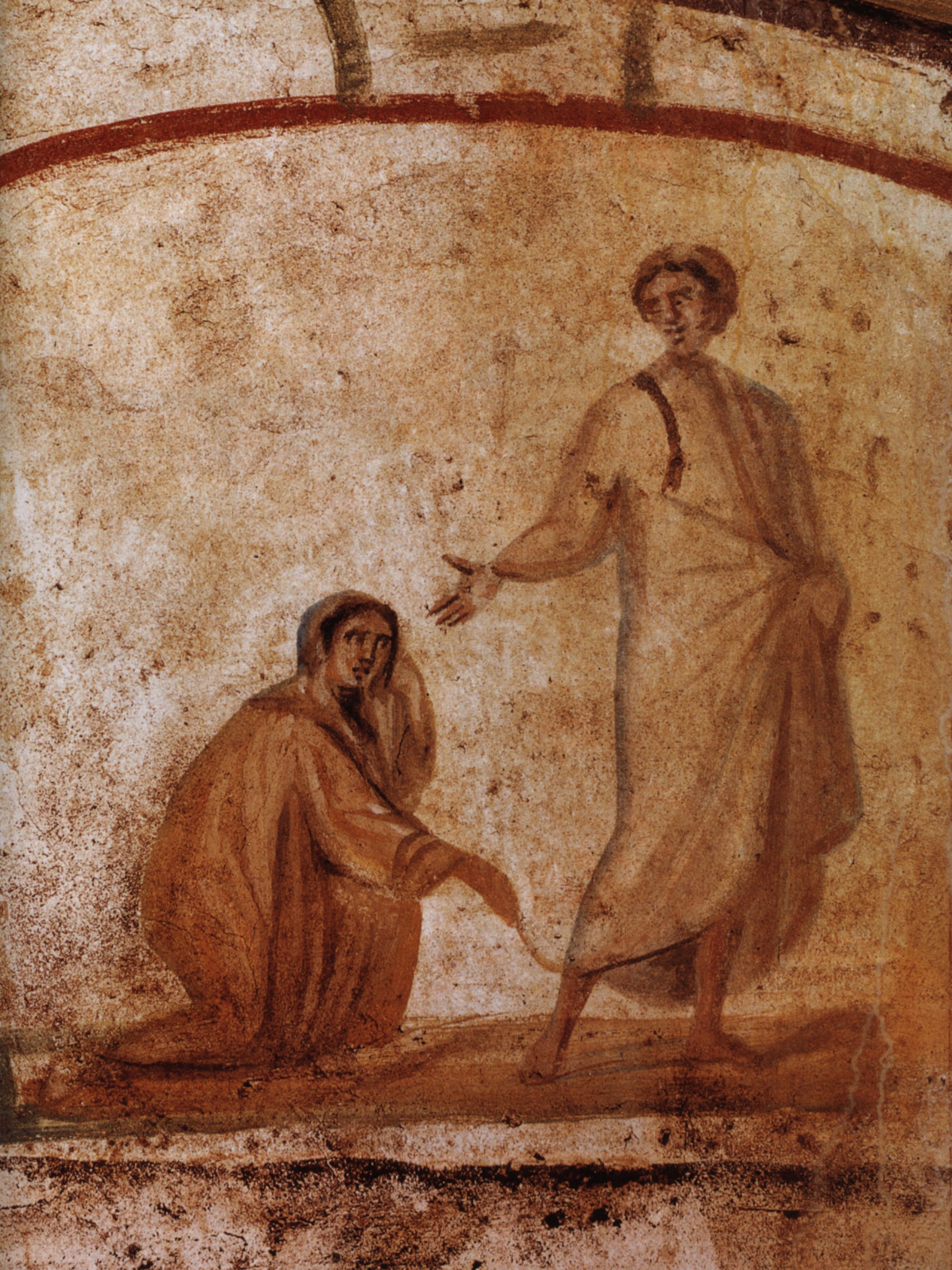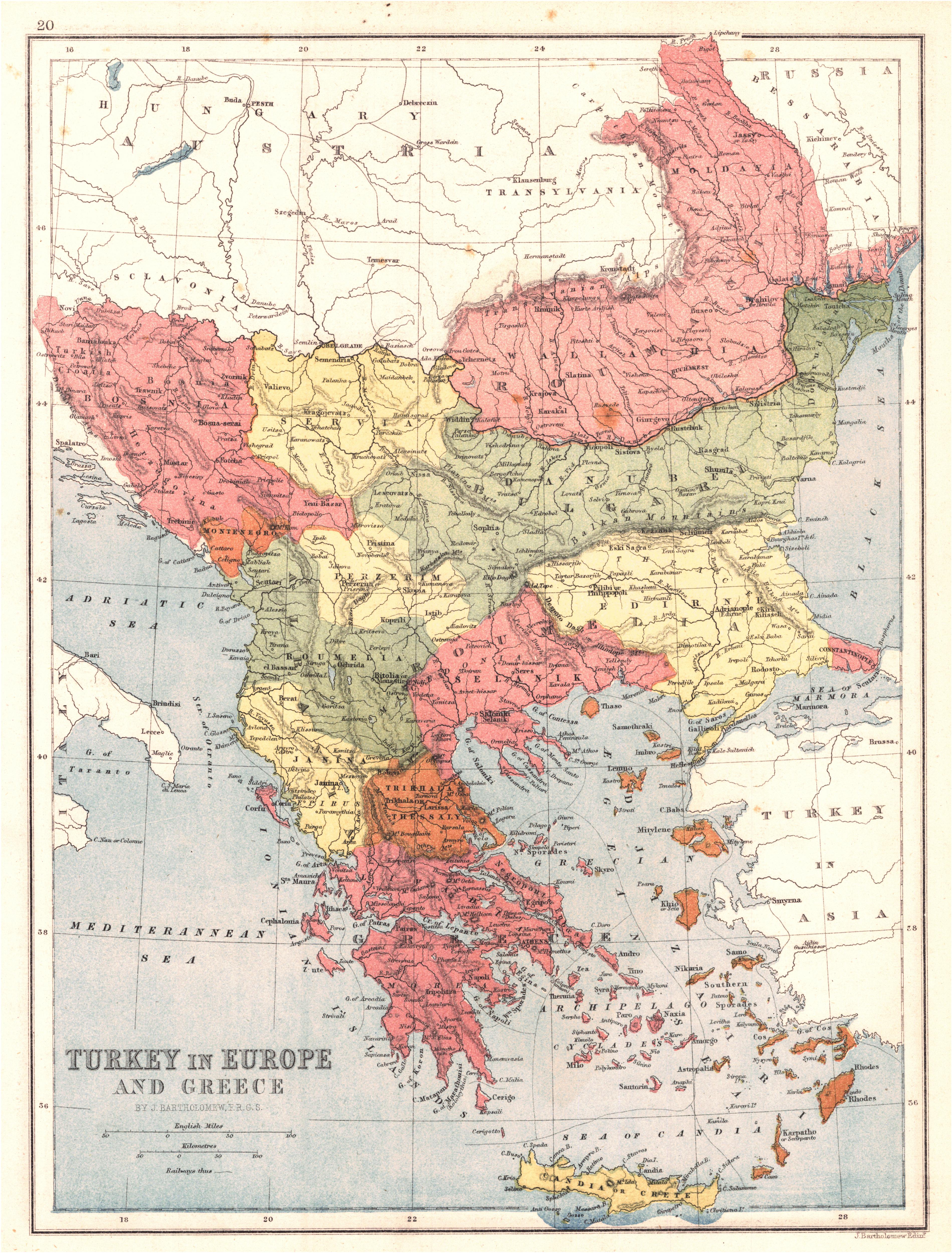|
Saint Sophia Church, Sofia
The Saint Sofia Church () is the oldest church in the Bulgarian capital Sofia, dating to the fourth century. In the predecessor building took place the Council of Serdica held most probably in 343 and attended by 316 bishops. In the 14th century, the church gave its name to the city, previously known as Serdika (Сердика). History and architecture The Saint Sofia Church was built on the site of several earlier churches from the fourth century, and places of worship dating back to the days when it was the necropolis of the Roman town of Serdica. In the second century, it was the location of a Roman theatre. Other churches were built and destroyed during conflicts with Goths, Huns and others for the next few centuries. As a contemporary structure of the Hagia Sophia church in Constantinople, the Saint Sofia Church, with the cross design of its current basilica, two towers and one tower-cupola, is believed to have been built during the reign of Byzantine Emperor Justinian I (5 ... [...More Info...] [...Related Items...] OR: [Wikipedia] [Google] [Baidu] [Amazon] |
Sofia
Sofia is the Capital city, capital and List of cities and towns in Bulgaria, largest city of Bulgaria. It is situated in the Sofia Valley at the foot of the Vitosha mountain, in the western part of the country. The city is built west of the Iskar (river), Iskar river and has many mineral springs, such as the Sofia Central Mineral Baths. It has a humid continental climate. Known as Serdica in Classical antiquity, antiquity, Sofia has been an area of human habitation since at least 7000 BC. The recorded history of the city begins with the attestation of the conquest of Serdica by the Roman Republic in 29 BC from the Celtic settlement of Southeast Europe, Celtic tribe Serdi. During the decline of the Roman Empire, the city was raided by Huns, Visigoths, Pannonian Avars, Avars, and Slavs. In 809, Serdica was incorporated into the First Bulgarian Empire by Khan (title), Khan Krum and became known as Sredets. In 1018, the Byzantine Empire, Byzantines ended Bulgarian rule until 1194, ... [...More Info...] [...Related Items...] OR: [Wikipedia] [Google] [Baidu] [Amazon] |
Constantinople
Constantinople (#Names of Constantinople, see other names) was a historical city located on the Bosporus that served as the capital of the Roman Empire, Roman, Byzantine Empire, Byzantine, Latin Empire, Latin, and Ottoman Empire, Ottoman empires between its consecration in 330 until 1930, when it was renamed to Istanbul. Initially as New Rome, Constantinople was founded in 324 during the reign of Constantine the Great on the site of the existing settlement of Byzantium, and shortly thereafter in 330 became the capital of the Roman Empire. Following the collapse of the Western Roman Empire in the late 5th century, Constantinople remained the capital of the Eastern Roman Empire (also known as the Byzantine Empire; 330–1204 and 1261–1453), the Latin Empire (1204–1261), and the Ottoman Empire (1453–1922). Following the Turkish War of Independence, the Turkish capital then moved to Ankara. Although the city had been known as Istanbul since 1453, it was officially renamed as Is ... [...More Info...] [...Related Items...] OR: [Wikipedia] [Google] [Baidu] [Amazon] |
List Of Churches In Sofia
This is a list of Christian churches within the city limits of Sofia - the Bulgarian capital city. The city is the centre of the Sofia ecclesiastical district as well as a centre of the Sofia eparchy (diocese), part of The Bulgarian Orthodox Church. Bulgarian Orthodox Churches Other Christian Temples See also * Archbishopric of Sardica *Christianization of Bulgaria *Bulgarian Orthodox Church *Byzantine Revival architecture *List of largest church buildings *List of largest Eastern Orthodox church buildings * List of oldest church buildings *Ancient Roman architecture *Basilica *Rotunda (architecture) *Edict of Serdica *History of Sofia * Timeline of Sofia history * List of oldest buildings in Sofia ReferencesTemples in Sofia eparchy External links *{{in lang, bg}Bulgarian Patriarchate Sofia Churches Sofia Sofia is the Capital city, capital and List of cities and towns in Bulgaria, largest city of Bulgaria. It is situated in the Sofia Valley at the foot of t ... [...More Info...] [...Related Items...] OR: [Wikipedia] [Google] [Baidu] [Amazon] |
Monument To The Unknown Soldier, Sofia
The Monument to the Unknown Soldier (, ''Pametnik na Neznayniya voin'') is a monument in the centre of Sofia, the capital of Bulgaria, located just next to the 6th-century Church of St Sophia, on 2 Paris Street. The monument commemorates the hundreds of thousands of Bulgarian soldiers who died in wars defending their homeland. Ceremonies involving the President of Bulgaria and foreign state leaders are often performed here. The monument was designed by architect Nikola Nikolov and opened on September 22, 1981, the 1300th anniversary of establishment of the Bulgarian state. Retrieved December 7, 2011 The Monument to the Unknown Soldier features an |
Vladimir I Of Kiev
Vladimir I Sviatoslavich or Volodymyr I Sviatoslavych (; Christian name: ''Basil''; 15 July 1015), given the epithet "the Great", was Prince of Novgorod from 970 and Grand Prince of Kiev from 978 until his death in 1015. The Eastern Orthodox Church canonised him as Saint Vladimir. Vladimir's father was Sviatoslav I of the Rurik dynasty. After the death of his father in 972, Vladimir, who was then the prince of Novgorod, was forced to flee abroad after his brother Yaropolk murdered his other brother Oleg in 977 to become the sole ruler of Rus'. Vladimir assembled a Varangian army and returned to depose Yaropolk in 978. By 980, Vladimir had consolidated his realm to the Baltic Sea and solidified the frontiers against incursions of Bulgarians, Baltic tribes and Eastern nomads. Originally a follower of Slavic paganism, Vladimir converted to Christianity in 988, and Christianized the Kievan Rus. Name Several scholars refer to Vladimir as ''Volodimer'', also spelled ''Volodimi ... [...More Info...] [...Related Items...] OR: [Wikipedia] [Google] [Baidu] [Amazon] |
Saint George
Saint George (;Geʽez: ጊዮርጊስ, , ka, გიორგი, , , died 23 April 303), also George of Lydda, was an early Christian martyr who is venerated as a saint in Christianity. According to holy tradition, he was a soldier in the Roman army. Of Cappadocian Greek origin, he became a member of the Praetorian Guard for Roman emperor Diocletian, but was sentenced to death for refusing to recant his Christian faith. He became one of the most venerated saints, heroes, and megalomartyrs in Christianity, and he has been especially venerated as a military saint since the Crusades. He is respected by Christians, Druze, as well as some Muslims as a martyr of monotheistic faith. In hagiography, he is immortalised in the legend of Saint George and the Dragon and as one of the most prominent military saints. In Roman Catholicism, he is also venerated as one of the Fourteen Holy Helpers. His feast day, Saint George's Day, is traditionally celebrated on 23 April. Historic ... [...More Info...] [...Related Items...] OR: [Wikipedia] [Google] [Baidu] [Amazon] |
Immanuel
Immanuel or Emmanuel (, "God swith us"; Koine Greek: ) is a Hebrew name that appears in the Book of Isaiah (7:14) as a sign that God will protect the House of David. The Gospel of Matthew ( Matthew 1:22 –23) interprets this as a prophecy of the birth of the Messiah and the fulfillment of Scripture in the person of Jesus. ''Immanuel'' "God ( El) with us" is one of the "symbolic names" used by Isaiah, alongside Shearjashub, Maher-shalal-hash-baz, or Pele-joez-el-gibbor-abi-ad-sar-shalom. It has no particular meaning in Jewish messianism. In Christian theology by contrast, based on its use in Isaiah 7:14, the name has come to be read as a prophecy of the Christ, following Matthew 1:23, where ''Immanuel'' () is translated as ( KJV: "God with us"), and also Luke 7:14–16 after the raising of the dead man in Nain, where it was rumoured throughout all Judaea that "God has visited his people" ( KJV). Isaiah 7–8 Summary The setting is the Syro-Ephraimite War, 735- ... [...More Info...] [...Related Items...] OR: [Wikipedia] [Google] [Baidu] [Amazon] |
Holy Wisdom
Holy Wisdom (, ) is a concept in Christian theology. Christian theology received the Old Testament personification of Wisdom (Hebrew ''Chokmah'') as well as the concept of Sophia (wisdom), Wisdom (''Sophia'') from Greek philosophy, especially Platonism. In Christology, Christ the Logos as God the Son was identified with Divine Wisdom from earliest times. There has also been a minority position which identified Wisdom with the Holy Spirit in Christianity, Holy Spirit instead. Furthermore, in Christian mysticism, mystical interpretations forwarded in Russian Orthodoxy, known as Sophiology, Holy Wisdom as a feminine principle came to be identified with the Theotokos (Mother of God) rather than with Christ himself. Similar interpretations were proposed in feminist theology as part of the "Gender of God in Christianity, God and Gender" debate in the 1990s. Old Testament In the Septuagint, the Greek noun ''sophia'' is the translation of Biblical Hebrew, Hebrew "wisdom". Wisdom ... [...More Info...] [...Related Items...] OR: [Wikipedia] [Google] [Baidu] [Amazon] |
Southeastern Europe
Southeast Europe or Southeastern Europe is a geographical sub-region of Europe, consisting primarily of the region of the Balkans, as well as adjacent regions and Archipelago, archipelagos. There are overlapping and conflicting definitions of the region, due to political, economic, historical, cultural, and geographical considerations. Sovereign state, Sovereign states and territories that may be included in the region are Albania, Bosnia and Herzegovina, Bulgaria, Croatia (alternatively placed in Central Europe), Greece (alternatively placed in the broader region of Southern Europe), Kosovo, Montenegro, North Macedonia, Romania (alternatively placed in Eastern Europe), Serbia, and the East Thrace, European part of Turkey (alternatively placed in the broader region of Southern Europe, also in West Asia, Western Asia with the rest of the country). Sometimes, Cyprus (most often placed in West Asia), Hungary (most often placed in Central Europe), Moldova (most often placed in Easte ... [...More Info...] [...Related Items...] OR: [Wikipedia] [Google] [Baidu] [Amazon] |
Early Christian Architecture
Early Christian art and architecture (or Paleochristian art) is the art produced by Christians, or under Christian patronage, from the earliest period of Christianity to, depending on the definition, sometime between 260 and 525. In practice, identifiably Christian art only survives from the 2nd century onwards. After 550, Christian art is classified as Byzantine, or according to region. It is hard to know when distinctly Christian art began. Prior to 100, Christians may have been constrained by their position as a persecuted group from producing durable works of art. Since Christianity as a religion was not well represented in the public sphere, the lack of surviving art may reflect a lack of funds for patronage, and simply small numbers of followers. The Old Testament restrictions against the production of graven (an idol or fetish carved in wood or stone) images (see also Idolatry and Christianity) may also have constrained Christians from producing art. Christians may have m ... [...More Info...] [...Related Items...] OR: [Wikipedia] [Google] [Baidu] [Amazon] |
Bogdan Filov
Bogdan Dimitrov Filov (; 10 April 1883 – 1 February 1945) was a Bulgarian archaeologist, art historian and politician. He was prime minister of Bulgaria during World War II. During his tenure, Bulgaria became the seventh nation to join the Axis Powers. Early life Born in Stara Zagora, Filov was partly educated in Imperial Germany at Leipzig, Freiburg, and Würzburg. His Ph.D. dissertation from Freiburg was published as a book – a supplement to the prestigious German magazine '' Klio'' in Leipzig. Beginning May 1, 1906, he worked in the National Archaeological Museum in Sofia. Filov studied archeology and numismatics in Bonn, Paris and Rome from 1907 to 1909. He was the indisputable leader of "antique" (pre-classical) archaeology in Bulgaria. In 1927 he published the finds from Trebenishta, a necropolis of Peresadyes, rich with gold and iron artifacts. Between 1910 and 1920 Filov was director of the National Archaeological Museum. He conducted the first studies of the an ... [...More Info...] [...Related Items...] OR: [Wikipedia] [Google] [Baidu] [Amazon] |
History Of Ottoman Bulgaria
The history of Ottoman Bulgaria spans nearly 500 years, beginning in the late 14th century, with the Ottoman conquest of smaller kingdoms from the disintegrating Second Bulgarian Empire. In the late 19th century, Bulgaria was liberated from the Ottoman Empire, and by the early 20th century it was declared independent. The brutal suppression of the Bulgarian April Uprising of 1876 and the public outcry it caused across Europe led to the Constantinople Conference, where the Great Powers tabled a joint proposal for the creation of two autonomous Bulgarian vilayets, largely corresponding to the ethnic boundaries drawn a decade earlier with the establishment of the Bulgarian Exarchate. The sabotage of the Conference, by either the British or the Russian Empire (depending on theory), led to the Russo-Turkish War (1877–1878), whereby the much smaller Principality of Bulgaria, a self-governing, but functionally independent Ottoman vassal state was created. In 1885 the Ottoman auto ... [...More Info...] [...Related Items...] OR: [Wikipedia] [Google] [Baidu] [Amazon] |







